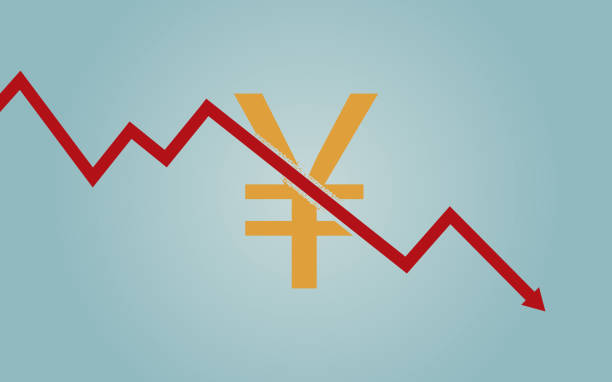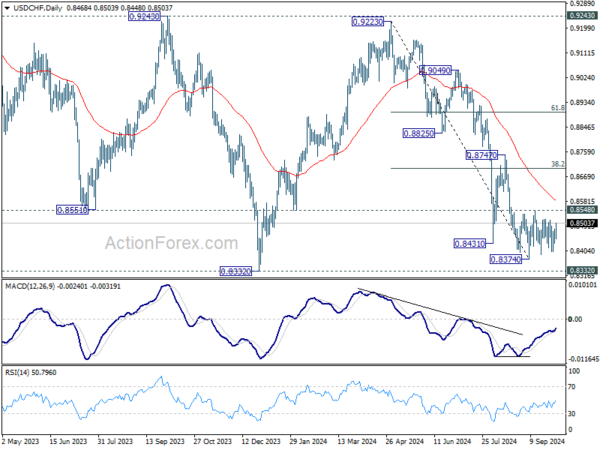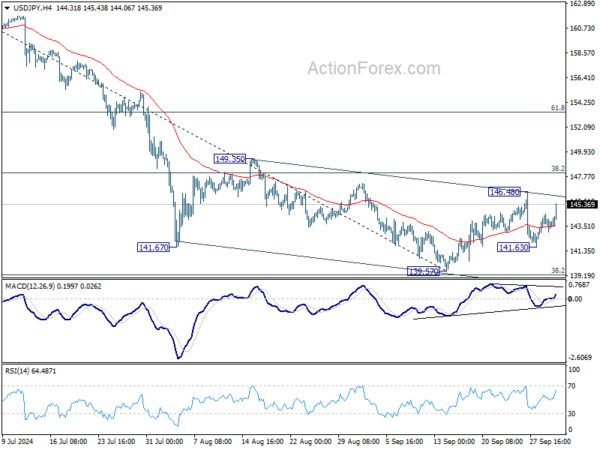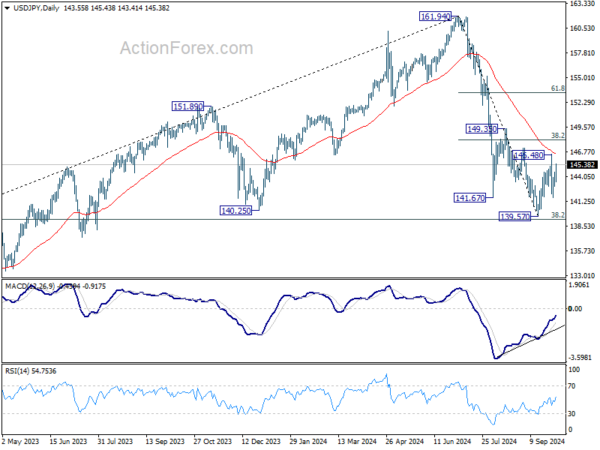Japanese Yen weakened notably in early US session, reacting to rising US Treasury yields, which were boosted by stronger-than-expected US ADP job data. Adding to Yen’s decline, Japan’s new Prime Minister, Shigeru Ishiba, who was initially perceived as a monetary hawk, has softened his stance on interest rate hikes. After meeting with BoJ Governor Kazuo Ueda, Ishiba said he does not believe it is the right time for the BoJ to raise rates further, dampening expectations of another rate hike in December.
Reinforcing this dovish tone, Japan’s newly appointed Economy Minister, Ryosei Akazawa, emphasized in a press conference that Japan’s “top priority” is to ensure a “complete exit from deflation.” Akazawa further clarified that Ishiba’s previous comments on monetary Japanese Yen weakened notably in early US session, reacting to rising US Treasury yields, which were boosted by stronger-than-expected US ADP job data. Adding to Yen’s decline, Japan’s new Prime Minister, Shigeru Ishiba, who was initially perceived as a monetary hawk, has softened his stance on interest rate hikes. After meeting with BoJ Governor Kazuo Ueda, Ishiba said he does not believe it is the right time for the BoJ to raise rates further, dampening expectations of another rate hike in December.policy normalization were contingent on several “conditions,” signaling that any rate hikes would depend on broader economic circumstances.
Elsewhere, Dollar has strengthened against both Yen and Swiss Franc but is struggling to extend its recovery against other major currencies. Traders are adopting a cautious stance, waiting for developments in the Middle East and key US economic reports, including ISM Services PMI and non-farm payrolls data, which could impact sentiment and influence Fed’s policy outlook.
In terms of performance today, Australian Dollar is leading the market, followed by New Zealand Dollar and Canadian Dollar. Yen is the worst performer, followed by Swiss Franc and Dollar, while Euro and British Pound are trading in middle positions.
Techinically, USD/CHF is worth a watch in the next 24 hours given then Swiss CPI data will be released tomorrow. Break of 0.8548 resistance will suggest that rebound from 0.8374 is at least correcting the whole decline from 0.9223. In this case, further rally should be seen to 38.2% retracement of 0.9223 to 0.8374 at 0.8698 at least.
In Europe, at the time of writing, FTSE is up 0.11%. DAX is down -0.58%. CAC is down -0.08%. UK 10-year yield is up 0.099at 4.043. Germany 10-year yield is up 0.065 at 2.106. Earlier in Asia, Nikkei fell -2.18%. Hong Kong HSI rose 6.20%. China was on holiday. Singapore Strait Times rose 0.10%. Japan 10-year JGB yield fell -0.0331 to 0.820.
US ADP employment rises 143K, wage growth slows
US ADP report for September showed private employment increased by 143k, surpassing expectations of 120k. The goods-producing sector added 42k jobs, while the service-providing sectors contributed 101k new jobs.
By establishment size, small companies saw a loss of -8k jobs, while medium-sized businesses added 64k and large companies increased their workforce by 86k.
Wage growth continued to slow, with year-over-year pay gains for job-stayers easing to 4.7%. The decline was more pronounced for job-changers, whose wage growth fell from 7.3% to 6.6%.
Nela Richardson, ADP’s chief economist, noted that “stronger hiring didn’t require stronger pay growth last month.” She also pointed out that the premium job-changers usually enjoy over job-stayers narrowed to 1.9%, matching the low last seen in January.
ECB’s de Guindos cites weaker growth outlook, expects recovery to strengthen over time
In a speech today, ECB Vice President Luis de Guindos acknowledged that Eurozone growth was weaker than expected in Q2, leading to a downward revision in the growth outlook for the region. He added that risks to growth remain “tilted to the downside”.
Despite this, de Guindos expressed optimism for the future, expecting the recovery to “strengthen over time”. He cited rising real incomes and the waning impact of restrictive monetary policy as key factors that should bolster consumption and investment. Additionally, he pointed to boost in exports as global demand improves, contributing to the recovery.
Eurozone unemployment rate unchanged at 6.4%, EU down to 5.9%
Eurozone’s unemployment rate was unchanged at 6.4% in August, aligning with market expectations. Meanwhile, EU unemployment rate fell slightly from 6.0% to 5.9%.
The report estimates that 13.027m people in EU, including 10.925m in Eurozone, were unemployed in August. Compared with the previous month, unemployment decreased by -108k across EU and by -94k within Eurozone.
On an annual basis, the improvement was even more notable. Compared to August 2023, the number of unemployed people dropped by -142k in EU and by -233k in Eurozone.
BoJ’s Ueda vows extremely high vigilance amid domestic and global economic uncertainties
BoJ Governor Kazuo Ueda reaffirmed today that Japan’s economy is expected to sustain a moderate recovery, which should support underlying inflation in converging toward 2% target over the coming years. However, Ueda did not repeat the usual pledge to continue raising interest rates if inflation moves in line with forecasts, signaling a shift in tone towards a more cautious approach.
Ueda highlighted the ongoing uncertainties surrounding Japan’s economy and inflation, stating that “uncertainty regarding Japan’s economy and prices remain high.” He also pointed to external risks, noting that the outlook for overseas economies, including the US, remains unclear, while financial markets continue to show signs of instability.
Given these risks, Ueda emphasized the need for “extremely high vigilance” in assessing economic developments. For now, BoJ will maintain a cautious stance, closely scrutinizing both domestic and global factors before tightening monetary policy again.
USD/JPY Mid-Day Outlook
Daily Pivots: (S1) 142.85; (P) 143.69; (R1) 144.41; More…
USD/JPY rebounded strongly today and focus is now on 146.48 resistance. Firm break there will resume the rebound from 139.57 to 38.2% retracement of 161.94 to 139.57 at 148.11. On the downside, below 141.63 will turn bias to the downside for 139.57 support. But in this case, strong support could be seen again from 139.26 fibonacci level to bring rebound.
In the bigger picture, fall from 161.94 medium term top is seen as correcting whole up trend from 102.58 (2021 low). Strong support could be seen from 38.2% retracement of 102.58 to 161.94 at 139.26 to contain downside, at least on first attempt. But in any case, risk will stay on the downside as long as 149.35 resistance holds. Sustained break of 139.26 would open up deeper medium term decline to 61.8% retracement at 125.25.



